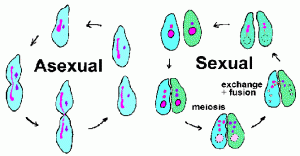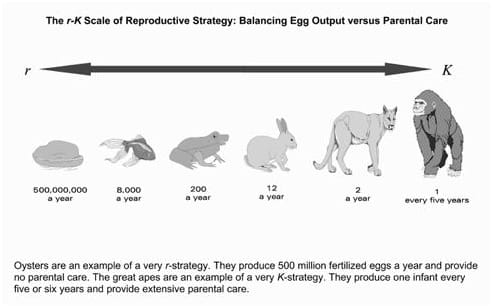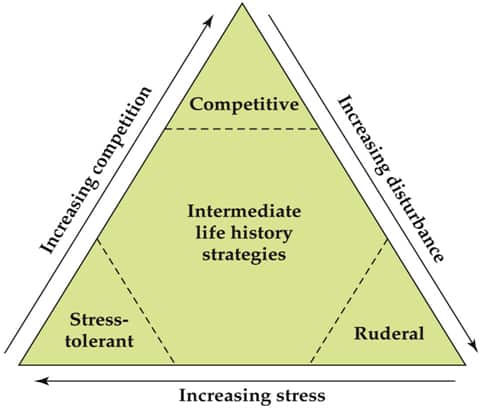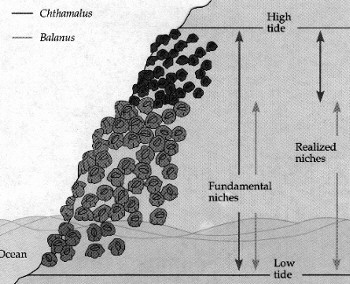An organism’s life history is a record of events relating to its growth, development, reproduction, and survival.
Life history characteristics include:
- Age and size at sexual maturity.
- Amount and timing of reproduction.
- Survival and mortality rates.
Life History Diversity
- Individuals within a species show variation in life-history traits due to genetic variation or environmental conditions.
- The life history strategy of a species is the overall pattern in average timing and nature of life-history events.
- It is shaped by the way the organism divides its time and energy between growth, reproduction, and survival.
- Ideal or optimal life histories maximize fitness (genetic contribution to future generations).
- But none are perfect; all organisms face constraints and ecological trade-offs.
- Phenotypic plasticity: One genotype may produce different phenotypes under different environmental conditions. [For example, growth and development may be faster in higher temperatures.]
- Changes in life-history traits can cause changes in adult morphology.
- Phenotypic plasticity may result in a continuous range of sizes, or discrete types called morphs.
- Polyphenism—a single genotype produces several distinct morphs.
- Spadefoot toad tadpoles have small omnivore morphs and larger carnivore morphs.
- Allometry: Different body parts grow at different rates, resulting in differences in shape or proportion. (Isometry- opposite, entire body growing proportion)
Modes of Reproduction
- Asexual reproduction: Simple cell division (binary fission)—all prokaryotes and many protists.

- Some multicellular organisms reproduce both sexually and asexually (e.g., corals).
- Benefits of sexual reproduction: Recombination promotes genetic variation and increased ability to respond to environmental challenges.
- Disadvantages: An individual transmits only half of its genome to the next generation; the population growth rate is slower.
- Isogamy: Gametes are equal in size.
- Anisogamy: Gametes of different sizes. Usually, the egg is much larger and contains nutritional material.
- The most multicellular organism produces anisogametes.
- Some species have direct development—the fertilized egg develops into a juvenile without passing through a larval stage. (i.e humans)
- Complex life cycles have at least two stages, with different body forms and that live in different habitats.
- Metamorphosis: Abrupt transition in form between the larval and juvenile stages.
- Most vertebrates have simple life cycles without abrupt transitions.
- But complex life cycles are common in insects, marine invertebrates, amphibians, and some fishes.
- Many parasites have evolved complex life cycles with specialized stages for each host.
- The different stages are specialized for different functions, e.g., colonization or sexual reproduction.
Life History Continua
- Classification schemes for reproductive patterns place the patterns on continua with extremes at each end.
- Number of reproductive events during the organism’s lifetime:
- Semelparous species reproduce only once.
- Iteroparous species can reproduce multiple times.
- r-selection and K-selection describe two ends of a reproductive strategy continuum.
- r is the intrinsic rate of increase of a population.
- r-selection: For high population growth rates; an advantage in newly disturbed habitats and uncrowded conditions.
- r-selected species (“live fast, die young”)- small organism:
- Short life spans, rapid development, early maturation, low parental investment, high reproduction rates.
- Most insects, small vertebrates such as mice, weedy plant species.
- K is the carrying capacity for a population.
- K-selection species: For slower growth rates in populations that are at or near K; this is an advantage in crowded conditions; efficient reproduction is favored.
- K-selected (“slow and steady”):
- Long-lived, develop slowly, late maturation, invest heavily in each offspring, low reproduction rates.
- Large mammals, reptiles such as tortoises and crocodiles, and long-lived plants such as oak and maple trees.

- Most life histories are intermediate between these extremes.
- The two species found in more predictable wet forest habitats had K-selected characteristics. R-selected species often grow in rapidly changing and unpredictable regions.
- One classification scheme for plant life histories is based on stress and disturbance (Grime 1977).
- Stress—any abiotic factor that limits growth.
- Disturbance—any process that destroys plant biomass.

- Low stress/low disturbance:
- Competitive plants with superior ability to acquire light, minerals, water, and space—have a selective advantage.
- High stress/low disturbance:
- Stress-tolerant plants with phenotypic plasticity, slow rates of water and nutrient use—not palatable to herbivores.
- Low stress/high disturbance:
- Ruderal plants (weed-r selected plants) with a short life span, rapid growth rates, heavy investment in seed production.
- Can exploit habitats after the disturbance has removed competitors.
- Seeds can survive a long time until conditions are right for rapid germination and growth.
Trade-Offs
Trade-offs: Organisms allocate limited energy or resources to one function at the expense of another.
Trade-offs between size and number of offspring:
- The larger the investment in each individual offspring, the fewer offspring can be produced.
- Investments: Energy, resources, and loss of time for other activities such as foraging.
- “Lack clutch size”: Maximum number of offspring a parent can successfully raise to maturity.
- Named for David Lack (1947) who noticed that bird’s clutch size increases with latitude; longer daylight hours may allow parents more time to forage and feed more offspring.
- In species without parental care, resources are invested in propagules (eggs or seeds).
- The size of the propagule is a trade-off with the number produced. (inverse relation; large seeds= small amount and vice versa)
- In plants, seed size is negatively correlated with the number of seeds produced.
- The size–number trade-off can also occur within species.
- Northern populations of western fence lizards have larger average clutch size, but smaller eggs, than southern populations.
- Trade-offs between current and future reproduction:
- For an iteroparous organism, the earlier it reproduces, the more times it can reproduce over its lifetime.
- But the number of offspring produced often increases with the size and age of the organism.
| # Offspring | # Offspring | |
| Year 1 | 10 | |
| Year 2 | 20 | 30 |
| Year 3 | 30 | 40 |
| Year 4 | 40 | 50 |
| Year 5 | 50 | 60 |
| Total = 150 | Total = 180 |
- It may be advantageous to delay reproduction and invest more energy in growth and survival in order to increase lifetime reproductive output.
- Senescence: Decline in physiological function with age. (cellular death)
- Onset can set an upper age limit for reproduction.
- Though human may experience this after reproduction; we live on because we are social beings and have the grandparents roles.
- Senescence may occur earlier in populations with high mortality rates or predation.
Life Cycles
- Complex life cycles may result from stage-specific selection pressures, and help minimize the drawbacks of small, vulnerable
 early stages.
early stages. - Functional specialization of stages is a common feature of complex life cycles.
- In many insects, the larval stage stays in a small area, such as on a single plant.
- The larvae are specialized for feeding and growth. The adult is specialized for dispersal and reproduction.
- Even in species with gradual morphological change, individuals may have different ecological roles depending on size and age—niche shift.
- The ecological niche is the physical and biological conditions that an organism needs to grow, survive, and reproduce.
- Niche shifts should occur when the organism reaches a size at which conditions are more favorable in the adult habitat than in the larval habitat.
- In the Nassau grouper, small juvenile fish hide in algae clumps; larger ones stay in rocky habitats.
- Dahlgren and Eggleston (2000) found that smaller juveniles are very vulnerable to predators in the rocky habitats, but larger ones were not.
- The niche shift was timed to maximize growth and survival.
- If the larval habitat is very favorable, metamorphosis may be delayed or eliminated. (see below)
- Some salamanders mature sexually while retaining larval morphology and habitat (paedomorphic).
- Mole salamander has both aquatic paedomorphic adults and terrestrial metamorphic adults in the same population.
- Sequential hermaphroditism: Change in sex during the course of the life cycle.
- Common in fish and invertebrates.
- The timing should take advantage of the high reproductive potential of different sexes at different sizes.
